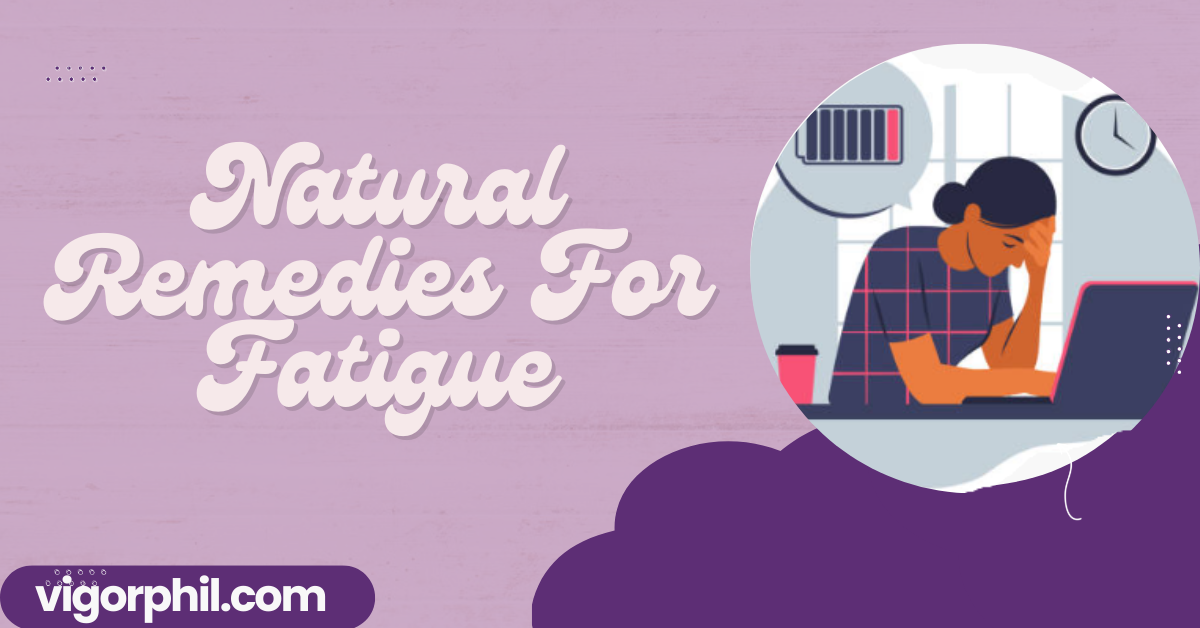Back pain is a common ailment that affects millions of people worldwide. In fact, it is estimated that up to 80% of adults will experience back pain at some point in their lives. Back pain can range from mild discomfort to severe pain that interferes with daily activities.
There are various causes of back pain, including poor posture, muscle strains, herniated discs, and underlying medical conditions. The prevalence of back pain is especially high among individuals who sit for extended periods, lift heavy objects, or participate in sports that put stress on the back.
While there are numerous treatments for back pain, many of them involve medications that can have unwanted side effects. As such, finding natural remedies for back pain is becoming increasingly popular. Natural remedies such as stretching, exercise, hot and cold therapy, and massage therapy have been shown to be effective in relieving back pain.
In this article, we will discuss the various causes of back pain, highlight the importance of finding natural remedies, and provide tips for managing and preventing back pain. By the end of this article, you will have a better understanding of how to manage back pain naturally and improve your overall quality of life.
Causes of Back Pain

Back pain can have various causes, and understanding the underlying cause is crucial for effective treatment. Here are some of the most common causes of back pain:
- Poor Posture: Poor posture is a common cause of back pain, especially in individuals who sit for extended periods. Slouching, hunching over a desk, and leaning forward while driving can strain the muscles and ligaments in the back, leading to pain and discomfort.
- Muscle Strains: Muscle strains are another common cause of back pain. Lifting heavy objects, sudden movements, and overuse can strain the muscles in the back, leading to pain and stiffness.
- Herniated Discs: A herniated disc occurs when the soft, jelly-like center of a spinal disc protrudes through a tear in the disc’s tough exterior. This can put pressure on nearby nerves, causing pain and discomfort.
- Sciatica: Sciatica is a type of back pain that originates in the sciatic nerve, which runs from the lower back down the legs. Sciatica can cause sharp, shooting pain, numbness, and tingling in the lower back and legs.
- Scoliosis: Scoliosis is a condition that causes the spine to curve to one side. This can cause uneven pressure on the discs and vertebrae, leading to back pain.
- Spinal Cord Injuries: Spinal cord injuries can cause severe back pain and even paralysis. These injuries can result from traumatic accidents or medical conditions such as spinal tumors or infections.
- Osteoporosis: Osteoporosis is a condition that causes bones to become brittle and weak, making them more susceptible to fractures. Compression fractures in the spine can cause severe back pain in individuals with osteoporosis.
- Ankylosing Spondylitis: Ankylosing spondylitis is a type of arthritis that affects the spine. This condition causes inflammation and stiffness in the spine, leading to chronic back pain.
- Fibromyalgia: Fibromyalgia is a chronic condition that causes widespread pain and tenderness in the body, including the back. This condition can also cause fatigue, sleep disturbances, and mood changes.
- Kidney Stones: Kidney stones are hard deposits that form in the kidneys and can cause severe pain in the back, side, and groin areas. Other symptoms of kidney stones include nausea, vomiting, and painful urination.
- Infections: Infections in the spine or surrounding tissues can cause back pain. These infections can result from bacterial, viral, or fungal agents and can cause symptoms such as fever, chills, and muscle aches.
- Tumors: Tumors in the spine or surrounding tissues can cause back pain, especially if they put pressure on nearby nerves or organs. Other symptoms of spinal tumors may include weakness, numbness, and difficulty with coordination.
- Psychological Factors: Psychological factors such as stress, anxiety, and depression can contribute to back pain. These conditions can cause muscle tension and affect how a person perceives and copes with pain.
It’s important to note that these causes can lead to chronic back pain if left untreated. Chronic back pain is characterized by pain that lasts for more than three months and can significantly impact a person’s quality of life.
Furthermore, chronic back pain can lead to depression, anxiety, and other mental health problems. Therefore, it’s crucial to seek treatment as soon as possible to prevent chronic back pain from developing. In the next section, we will discuss natural remedies and lifestyle changes that can help manage and prevent back pain.
Natural Remedies for Back Pain

Back pain can be a challenging condition to manage, and traditional treatments such as pain medication and surgery may not always be effective. However, natural remedies can offer a safe and effective alternative, with fewer side effects and lower costs.
Here are some natural remedies for back pain that you can try:
- Stretching and Exercise: Stretching and exercise can help to improve flexibility, strengthen muscles, and reduce tension in the back. Some effective exercises for back pain include yoga, Pilates, and core strengthening exercises.
- Hot and Cold Therapy: Applying heat or cold to the affected area can help to reduce inflammation and alleviate pain. Try using a hot water bottle or heating pad for 20 minutes, followed by a cold pack for 10 minutes. Repeat this cycle for up to 30 minutes.
- Massage Therapy: Massage therapy can help to relax tense muscles, improve circulation, and reduce pain. Consider getting a professional massage or using a handheld massager at home.
- Chiropractic Care: Chiropractic care involves manual manipulation of the spine to improve alignment and reduce pain. A chiropractor can perform adjustments and provide exercises and stretches to help manage back pain.
- Herbal Remedies: Certain herbs and supplements, such as turmeric, ginger, and magnesium, have anti-inflammatory properties that can help to reduce back pain. It’s essential to talk to a healthcare provider before taking any herbal remedies, as they can interact with medications and have side effects.
It’s important to note that while natural remedies can be effective for managing back pain, they may not be appropriate for everyone. It’s essential to consult with a healthcare provider before trying any natural remedies to ensure that they are safe and appropriate for your condition.
Lifestyle Changes for Back Pain Relief
While natural remedies can help manage back pain, lifestyle changes can also play a significant role in alleviating symptoms and preventing future episodes. Here are some tips for making lifestyle changes that can help manage back pain:
- Improving Posture: Poor posture can put a strain on the muscles and joints of the back, leading to pain and discomfort. Try to maintain a neutral spine position, with your ears, shoulders, and hips in alignment. Avoid slouching or hunching over when sitting or standing for prolonged periods.
- Maintaining a Healthy Weight: Excess weight can put additional strain on the muscles and joints of the back, leading to pain and discomfort. Maintaining a healthy weight through a balanced diet and regular exercise can help to alleviate symptoms and prevent future episodes.
- Staying Active: Regular physical activity can help to strengthen the muscles of the back, improve flexibility, and reduce tension. Consider low-impact activities such as walking, swimming, or cycling to improve overall fitness and reduce back pain.
- Reducing Stress: Stress and anxiety can cause muscle tension and increase pain perception. Practice stress-reducing activities such as exercise, and deep breathing, to help manage back pain.
It’s important to remember that lifestyle changes may take time to produce significant results. However, making small changes consistently over time can lead to long-term improvements in back pain management and overall health. Consult with a healthcare provider before starting any new exercise or diet regimen.
Prevention of Back Pain

While natural remedies and lifestyle changes can help manage back pain, preventing it from occurring in the first place is the best approach. Here are some tips for preventing back pain:
- Using Proper Lifting Techniques: Improper lifting techniques can strain the muscles and joints of the back, leading to injury and pain. When lifting heavy objects, use your legs to lift rather than your back, keep the load close to your body, and avoid twisting while lifting.
- Maintaining Good Posture: Poor posture can lead to muscle tension and strain on the back, leading to pain and discomfort. Practice good posture by sitting or standing with your shoulders back, chin tucked in, and feet flat on the ground.
- Staying Active and Exercising Regularly: Regular exercise can help to strengthen the muscles of the back and improve overall fitness, reducing the risk of back pain. Consider low-impact activities such as walking, swimming, or yoga to improve flexibility and prevent back pain.
- Investing in a Good Mattress and Supportive Shoes: A good mattress and supportive shoes can help to maintain proper alignment of the spine, reducing the risk of back pain. Choose a mattress that is firm enough to provide support but not too firm that it causes discomfort. Supportive shoes can help to distribute weight evenly and reduce strain on the back.
It’s important to remember that prevention is key to managing back pain. By incorporating these tips into your daily routine, you can reduce the risk of back pain and improve overall health and wellness. If you do experience back pain, it’s essential to consult with a healthcare provider to determine the cause and appropriate treatment.
Conclusion
Back pain is a common condition that can significantly impact the quality of life. While there are various causes of back pain, natural remedies, and lifestyle changes can help manage symptoms and prevent future episodes. In this article, we discussed the benefits of natural remedies such as stretching, hot and cold therapy, massage therapy, chiropractic care, and herbal remedies. We also highlighted the importance of lifestyle changes such as maintaining good posture, staying active, and reducing stress in managing back pain.
Prevention is key to managing back pain, and simple steps such as using proper lifting techniques, investing in a good mattress and supportive shoes, and maintaining a healthy weight can significantly reduce the risk of back pain. By incorporating these natural remedies and lifestyle changes into your daily routine, you can improve overall health and wellness and reduce the impact of back pain on your life.
We encourage readers to try these natural remedies and make lifestyle changes to manage and prevent back pain. However, it’s essential to consult with a healthcare provider if you experience persistent or severe back pain to determine the underlying cause and appropriate treatment. With the right approach, you can manage back pain and enjoy a healthier, pain-free life.
frequently Asked Questions on NATURAL REMEDY BACK PAIN
Reference
- Qaseem, A., Wilt, T. J., McLean, R. M., & Forciea, M. A. (2017). Noninvasive treatments for acute, subacute, and chronic low back pain: A clinical practice guideline from the American College of Physicians. Annals of internal medicine, 166(7), 514-530.
- Chou, R., Deyo, R., Friedly, J., Skelly, A., Hashimoto, R., Weimer, M., … & Brodt, E. D. (2017). Nonpharmacologic therapies for low back pain: a systematic review for an American College of Physicians Clinical Practice Guideline. Annals of internal medicine, 166(7), 493-505.
- Ernst, E. (2009). Chiropractic treatment for low back pain. Journal of pain and symptom management, 37(1), e1-e2.
- Cherkin, D. C., Sherman, K. J., Kahn, J., Wellman, R., Cook, A. J., Johnson, E., … & Deyo, R. A. (2011). A comparison of the effects of 2 types of massage and usual care on chronic low back pain: a randomized, controlled trial. Annals of internal medicine, 155(1), 1-9.
- Gagnier, J. J., Oltean, H., van Tulder, M. W., Berman, B. M., Bombardier, C., Robbins, C. B., … & Haas, A. V. (2016). Herbal medicine for low back pain: a Cochrane review. Spine, 41(2), 116-133.
- Mayo Clinic: Natural remedies for back pain – https://www.mayoclinic.org/diseases-conditions/back-pain/in-depth/back-pain-treatment/art-20048269
- National Institute of Neurological Disorders and Stroke: Low Back Pain Fact Sheet – https://www.ninds.nih.gov/Disorders/Patient-Caregiver-Education/Fact-Sheets/Low-Back-Pain-Fact-Sheet
- Harvard Health Publishing: 7 best natural remedies for back pain – https://www.health.harvard.edu/blog/7-best-natural-remedies-for-back-pain-2020011618643
- Spine-health: Natural treatments for lower back pain relief – https://www.spine-health.com/conditions/lower-back-pain/natural-treatments-lower-back-pain-relief
- Arthritis Foundation: Natural remedies for back pain – https://www.arthritis.org/health-wellness/treatment/complementary-therapies/natural-therapies/natural-remedies-for-back-pain











